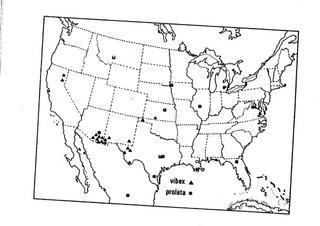
R. M. Bohart and L. S. Kimsey, 1982 · 9
Chrysis prolata |
|
80x5 -
240x3 -
240x4 -
320x1 -
320x2 -
320x3 -
640x1 -
640x2
Set display option above.
Click on
images to enlarge. |
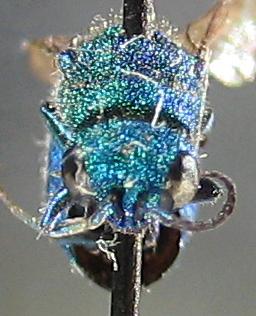
Native Bee Inventory and Monitoring Lab; Photographer: Erika Tucker · 1
Chrysis prolata, face |
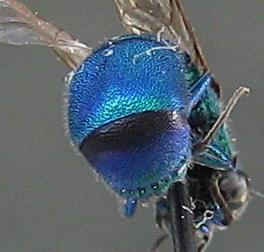
Native Bee Inventory and Monitoring Lab; Photographer: Erika Tucker · 1
Chrysis prolata, tail |
|
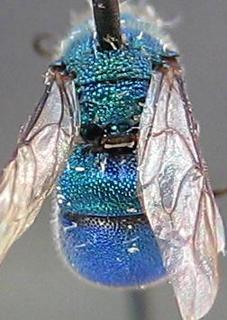
Native Bee Inventory and Monitoring Lab; Photographer: Erika Tucker · 1
Chrysis prolata, top |
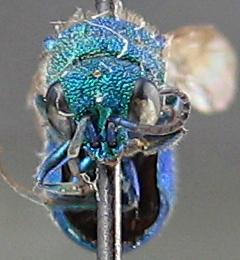
Native Bee Inventory and Monitoring Lab; Photographer: Erika Tucker · 1
Chrysis prolata. face |
|
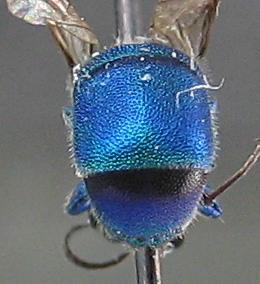
Native Bee Inventory and Monitoring Lab; Photographer: Erika Tucker · 1
Chrysis prolata. tail |
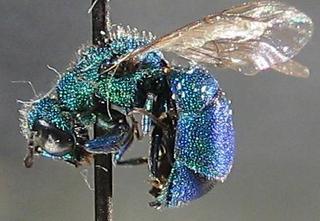
Native Bee Inventory and Monitoring Lab; Photographer: Erika Tucker · 1
Chrysis prolata |
|
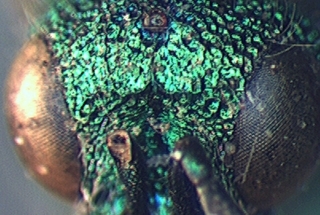
Native Bee Inventory and Monitoring Lab; Photographer: Erika Tucker · 1
Chrysis prolata, face |
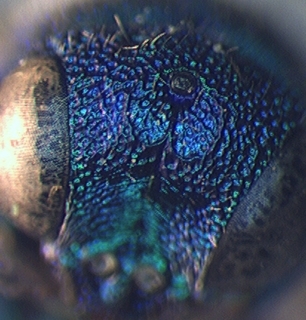
Native Bee Inventory and Monitoring Lab; Photographer: Erika Tucker · 1
Chrysis prolata, female, face |
|
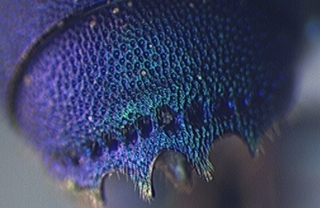
Native Bee Inventory and Monitoring Lab; Photographer: Erika Tucker · 1
Chrysis prolata, female, tail |
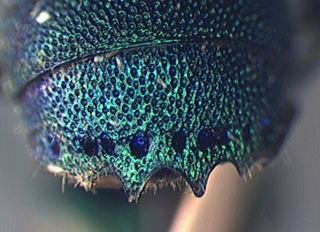
Native Bee Inventory and Monitoring Lab; Photographer: Erika Tucker · 1
Chrysis prolata, tail |
|
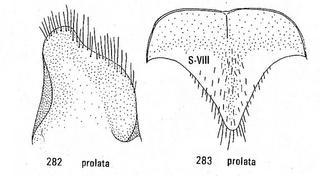
R. M. Bohart and L. S. Kimsey · 1
Chrysis prolata, male genitalia |
|
Overview |
Taken from:
R. M. Bohart and L. S. Kimsey. 1982. A Synopsis of the Chrysididae in America North of Mexico.
Chrysis prolata Bohart
(Figs. 282, 283)
Chrysis prolata Bohart 1964:229. Holotype female, Riley Co., Kansas (UCD).
Discussion: Originally described only from the female, the male is quite similar in characters of the face, antenna and T-III. Within its group, prolata is distinguished by its long subantennal distance and smooth curve of T-III in side view. Male genitalia and S-VIII are similar to those of tensa (figs. 282, 283).
Material examined: 4 males, 23 females including type.
Distribution: Widespread east of the Rocky Mountains: FLORIDA: Alachua; VIRGINIA: Manassas; ILLINOIS: Carlinville; IOWA: Sioux City; MICHIGAN: Oakland Co.; WISCONSIN: Washington Co.; MINNESOTA: Olmstead Co.; KANSAS: Riley Co.; MONTANA: Belgrade; TEXAS: Lee Co., Austin, Kingsville; ARIZONA: Oracle; ZACATECAS: 17 mi n. Fresnillo.
Species group of Chrysis propria Aaron
Diagnosis: Male and female F-I about 1.8-2.1 times as long broad, longer than F-III; subantennal distance 1.3-2.5 MOD and longer than malar space which is 0.5-1.3 MOD (in propria these two lengths about equal); transverse frontal carina irregular, often partial, with backward branches toward ocelli; midocellus surmounted by a thin eyelidlike fold; genal carina almost touching eye opposite base of forecoxa; mesopleuron and metanotum rather simple; T-II median longitudinal ridge absent or faint; T-III simple or double edged distally, four toothed, lateral edge undulate to strongly convex in semilateral view.
Included species: crotema Bohart prolata Bohart propria Aaron, tensa Bohart, and vibex bohart.
Discussion: The greatly reduced genal area occurs to a lesser extent in the group lauta which shows some other similarities. Based on records of one species, hosts are eumenids. When more biological information is available, the relationship of the group may be easier to assess. The group was described originally by Bohart (1964:228) who included rivalis and aridula, both removed from it at the present and submontana, which is now considered a synonym of propria.
Key to Chrysis propria group
1. Upper genal area just behind compound eye with a polished spot, subantennal distance
about 2.0 MOD ……………………………………………………………….vibex Bohart
Upper genal area completely punctate, subantennal distance various .………………... 2
2. Subantennal distance less than 2.0 MOD, shorter than F-II (fig. 203) ………………...3
Subantennal distance more than 2.0 MOD, longer than F-II …………………………..4
3. T-III laterally undulate or rather evenly convex (fig. 175), median notch of T-III simple, sharply edged (fig. 176) …………………………………………….propria Aaron
T-III laterally expanded and somewhat angular or subdentate (fig. 168), median notch of
T-III modified as in fig. 169 ……………………………………………….tensa Bohart
4. T-III median line in side view forming a nearly even curve ……………..prolata Bohart
T-III median line in side view forming a strong double curve …………crotema Bohart
|
|
| Supported by | |
Updated: 2024-04-25 22:36:12 gmt
|